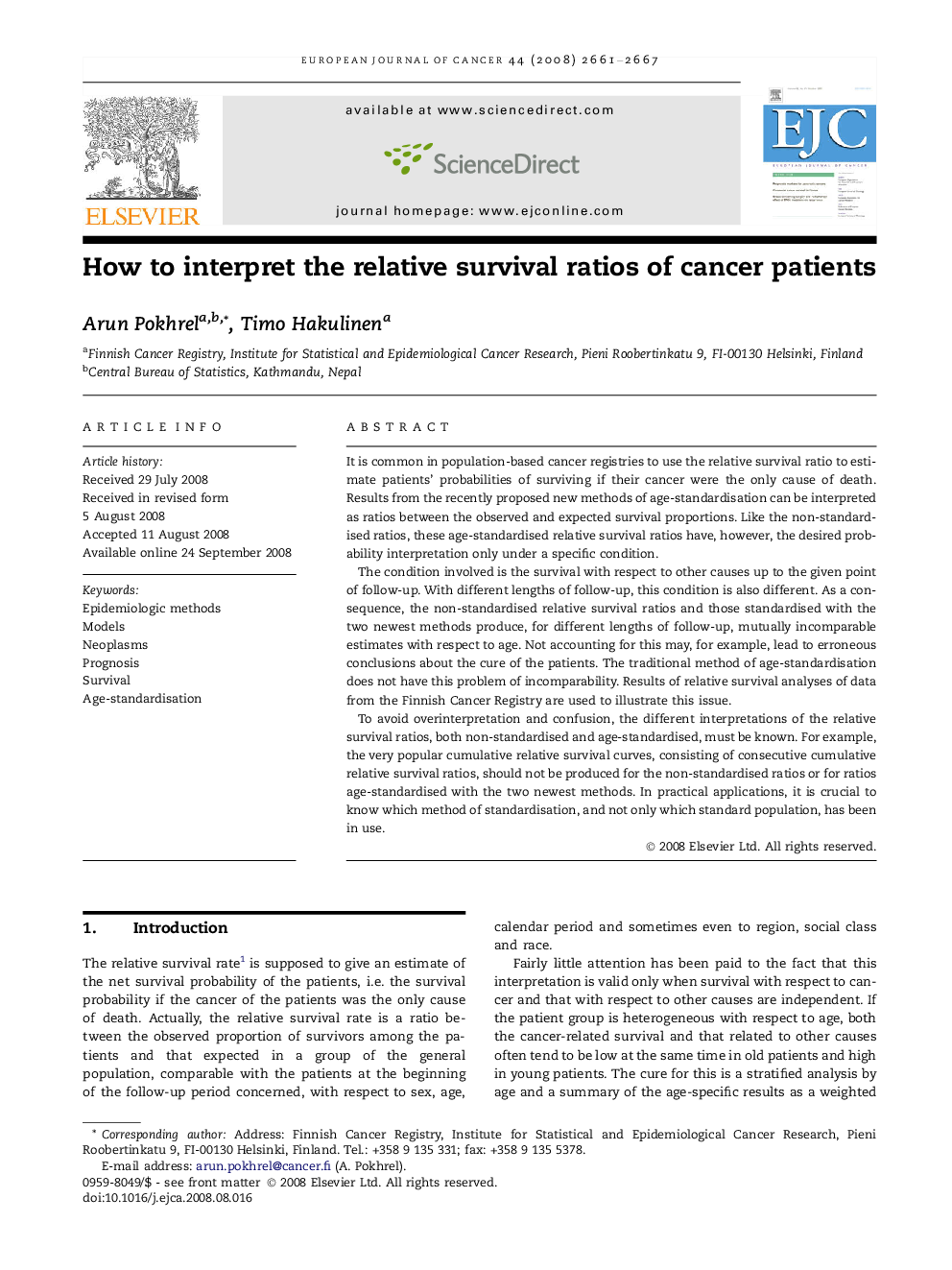| Article ID | Journal | Published Year | Pages | File Type |
|---|---|---|---|---|
| 2123958 | European Journal of Cancer | 2008 | 7 Pages |
It is common in population-based cancer registries to use the relative survival ratio to estimate patients’ probabilities of surviving if their cancer were the only cause of death. Results from the recently proposed new methods of age-standardisation can be interpreted as ratios between the observed and expected survival proportions. Like the non-standardised ratios, these age-standardised relative survival ratios have, however, the desired probability interpretation only under a specific condition.The condition involved is the survival with respect to other causes up to the given point of follow-up. With different lengths of follow-up, this condition is also different. As a consequence, the non-standardised relative survival ratios and those standardised with the two newest methods produce, for different lengths of follow-up, mutually incomparable estimates with respect to age. Not accounting for this may, for example, lead to erroneous conclusions about the cure of the patients. The traditional method of age-standardisation does not have this problem of incomparability. Results of relative survival analyses of data from the Finnish Cancer Registry are used to illustrate this issue.To avoid overinterpretation and confusion, the different interpretations of the relative survival ratios, both non-standardised and age-standardised, must be known. For example, the very popular cumulative relative survival curves, consisting of consecutive cumulative relative survival ratios, should not be produced for the non-standardised ratios or for ratios age-standardised with the two newest methods. In practical applications, it is crucial to know which method of standardisation, and not only which standard population, has been in use.
